#deck: book of shadows volume 1: as above
Explore tagged Tumblr posts
Note
Hi jasper!!
They/them DB again :3
I am back for another reading if that is ok :D
This time i am looking for,, advice? On where to go or maybe where to restart with my craft
Background info: i've been very on and off with all this stuff and kept jumping around without a purpose, so im wondering if there is anything to know before i "lock in" i suppose lol
Im sorry if this doesnt make much sense but i trust u :3
Welcome back to the ask box, DB! For this reading, I have blended the As Above half of the Book of Shadows Tarot by Barbara Moore with the Spirit Allies oracle deck by Jill Pyle and Cidney Bachert! Both of these decks are very Wiccan, but they're also some of the more actually-craft-focused decks I own, so we'll just have to grit our teeth. You have received the 6 of Fire reversed, the 5 of Fire upright, and 31. Kratom for this reading!
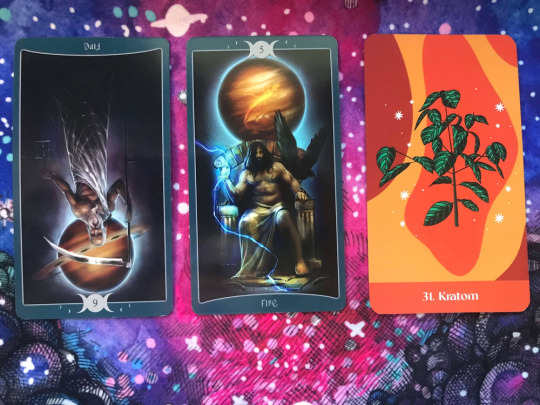
Oh this is a delightful spread, sliding down from 6 to 5. And if you do the thing that tarot recommends and add the individual numbers of 31 (3 and 1) together, you get 4, continuing the slow slide. Quite nice.
So here's what's going on with the As Above deck. The suits are all renamed to their elements and assigned a category. In this case, Fire is planets and salamanders. Broadly speaking, this suit emphasizes things like candle magic - up to anointing, carving, and everything to do with that. The 5 and 6 of Fire, then, are Jupiter and Saturn respectively. Instead of reversals, this deck technically has shadow sides, which is what Saturn is portraying.
With me so far?
The reversed Saturn indicates the building of walls and retreat. The fear of failure overwhelms the desire to succeed. This may be a case where you're scared of things not working in your practice. As annoying as it is for things to not work when you put time into them, it's very important to understand that failure is not total. In the wise words of Miss Frizzle, "If at first you don't succeed, find out why."


So, I've been getting into planetary magic recently. Been dipping my toe in and making a document of keywords and correspondences and whatnot. Somewhere among all of that research, I came across the idea that Jupiter opposes Saturn. Jupiter is benefic and auspicious, while Saturn is harsh and malefic. Saturn is when you want to bind and punish, while Jupiter is when you want to grow and gain.
Jupiter, the Great Benefactor, is "like everyone's favorite uncle - generous, fun and charming", according to Barbara Moore. And I would agree. Jupiter is associated with things like prosperity, expansion, and religion/spirituality. This could mean that getting back into the actual spiritual part of your practice, if such a thing existed previously, could help. Otherwise, magic to help you and the folks around you is also a potential point to consider as you get back into your practice or rework it.
And now, for something completely different. Mitragyna Speciosa is a tropical evergreen from southeast Asia. Its leaves, the Kratom part, has been used in herbal medicine for chronic pain, opioid withdrawal symptoms, recreational purposes, and more...although the United States Food and Drug Administration disagrees.
As a card, however, Kratom asks you this: What are you trying to avoid or ignore that you know is a problem? What are you holding onto that's just holding you back? As you handle problems, you'll generally feel better, even if the solution may sting a bit. It's gonna be uncomfortable, but discomfort is a necessary part of life, even though we all hate it. This card actually ties back in with the 6 of Fire/Saturn card, in a way.
Whew! I see why @khajiit-reads pulls multiple cards for questions, I love the amount of detail I can put into this reading, even though it takes a bit longer. It's very nice to see how all the cards interact.
Anyhow, I hope this reading has been helpful! If you feel so inclined, please feel free to send feedback in my ask box, leave feedback in a reblog of this reading, and/or reblog my reading guidelines!
~Jasper
7 notes
·
View notes
Text
Billows And Shadows
Volume 1: Fantine; Book 2: The Fall; Chapter 8: Billows and Shadows
A man overboard!
What matters it? The vessel does not halt. The wind blows. That sombre ship has a path which it is forced to pursue. It passes on.
The man disappears, then reappears; he plunges, he rises again to the surface; he calls, he stretches out his arms; he is not heard. The vessel, trembling under the hurricane, is wholly absorbed in its own workings; the passengers and sailors do not even see the drowning man; his miserable head is but a speck amid the immensity of the waves. He gives vent to desperate cries from out of the depths. What a spectre is that retreating sail! He gazes and gazes at it frantically. It retreats, it grows dim, it diminishes in size. He was there but just now, he was one of the crew, he went and came along the deck with the rest, he had his part of breath and of sunlight, he was a living man. Now, what has taken place? He has slipped, he has fallen; all is at an end.
He is in the tremendous sea. Under foot he has nothing but what flees and crumbles. The billows, torn and lashed by the wind, encompass him hideously; the tossings of the abyss bear him away; all the tongues of water dash over his head; a populace of waves spits upon him; confused openings half devour him; every time that he sinks, he catches glimpses of precipices filled with night; frightful and unknown vegetations seize him, knot about his feet, draw him to them; he is conscious that he is becoming an abyss, that he forms part of the foam; the waves toss him from one to another; he drinks in the bitterness; the cowardly ocean attacks him furiously, to drown him; the enormity plays with his agony. It seems as though all that water were hate.
Nevertheless, he struggles.
He tries to defend himself; he tries to sustain himself; he makes an effort; he swims. He, his petty strength all exhausted instantly, combats the inexhaustible.
Where, then, is the ship? Yonder. Barely visible in the pale shadows of the horizon.
The wind blows in gusts; all the foam overwhelms him. He raises his eyes and beholds only the lividness of the clouds. He witnesses, amid his death-pangs, the immense madness of the sea. He is tortured by this madness; he hears noises strange to man, which seem to come from beyond the limits of the earth, and from one knows not what frightful region beyond.
There are birds in the clouds, just as there are angels above human distresses; but what can they do for him? They sing and fly and float, and he, he rattles in the death agony.
He feels himself buried in those two infinities, the ocean and the sky, at one and the same time: the one is a tomb; the other is a shroud.
Night descends; he has been swimming for hours; his strength is exhausted; that ship, that distant thing in which there were men, has vanished; he is alone in the formidable twilight gulf; he sinks, he stiffens himself, he twists himself; he feels under him the monstrous billows of the invisible; he shouts.
There are no more men. Where is God?
He shouts. Help! Help! He still shouts on.
Nothing on the horizon; nothing in heaven.
He implores the expanse, the waves, the seaweed, the reef; they are deaf. He beseeches the tempest; the imperturbable tempest obeys only the infinite.
Around him darkness, fog, solitude, the stormy and nonsentient tumult, the undefined curling of those wild waters. In him horror and fatigue. Beneath him the depths. Not a point of support. He thinks of the gloomy adventures of the corpse in the limitless shadow. The bottomless cold paralyzes him. His hands contract convulsively; they close, and grasp nothingness. Winds, clouds, whirlwinds, gusts, useless stars! What is to be done? The desperate man gives up; he is weary, he chooses the alternative of death; he resists not; he lets himself go; he abandons his grip; and then he tosses forevermore in the lugubrious dreary depths of engulfment.
Oh, implacable march of human societies! Oh, losses of men and of souls on the way! Ocean into which falls all that the law lets slip! Disastrous absence of help! Oh, moral death!
The sea is the inexorable social night into which the penal laws fling their condemned. The sea is the immensity of wretchedness.
The soul, going downstream in this gulf, may become a corpse. Who shall resuscitate it?
11 notes
·
View notes
Text
“The Azure Sky” - Chapter 4 - Lego Elves
Shadows to the Brightest Flame: Series
- The legacy of Lumia’s influence is scarred eternally into the lands of Elvendale. Burdened by a prophecy foretelling her demise and need for a successor, she watches for one capable of such power. Yet her enemies are working steadily to undo all she’s labored so long for, and it is millenia too late to make peace.
Emily Jones, heir to Eimileen, is a bold girl dedicated to protecting Elvendale, but the world she has grown so fond of is not so black and white as it seems, and the titles of Guardian of Portal and Guardian of Light may hold darker legacies some ancient elves have worked tirelessly to hide.
In conjunction with the extended version of the Guardian of Light prophecy I wrote previously
Basically a rewrite of all of the Lego Elves & Secrets of Elvendale storylines with an additional arc beyond the Season 4: Into the Shadows. There will be a varying degree of deviation from canon.
Technically a crossover with Lord of the Rings/Hobbit/Silmarillion in terms of worldbuidling, as I set Elvendale as being north of Middle-Earth, cause this is fanfic and I can. So there will be mentions of the Noldor, Sindar, Silvan, and some Tolkien characters, but they will be mostly background. Definitely not an issue if you aren’t familiar with the Middle-Earth fandom; everything will still be easy to understand.
Book 1: The Azure Sky
Grieving over the unexpected death of her grandmother, Emily Jones is accidentally trapped in another world. Befriending a few young elves in an attempt to find her way home, Emily discovers many secrets about her grandmother’s past, but for every truth she learns two more questions take its place, leaving her vulnerable to darker force inhabiting this realm.
A rewrite of Unite the Magic
____________________________________________
Chapter 1
Chapter 2
Chapter 3
____________________________________________
Chapter 4
Emily watches the golden light of early sunset reflects upon the surface of the ocean, changing shape and hue as the waves roll. The gentle rhythm is soothing, distancing her from the events of the past couple of weeks.
Peaceful, content.
She shifts her position on the wooden bench. She feels the edge of a splinter catch the hem of her shorts, sighs.
It’s all too real to be a dream.
The admittance is not as terrifying as it should be, being trapped in a strange world, but it certainly a beautiful one, vibrant, angelic. A part of her truly would rather stay here a thousand years than suffer another day on Earth, a voice that cares not whether they succeed in finding a way to return her home.
That wistful dream shatters when she thinks of her parents and her little sister, Sophie, wondering where she could be, having only gone to wander in her grandmother’s garden. They would never learn the truth, the mystery forever haunting them.
She leans her head over, watching the water, frowns. “Have we stopped?”
“No, Em,” Azari calls from above the cabin. “We’re just going so fast you can’t feel it.”
“Actually,” Naida corrects, “We’ve stopped. The wind’s died down.”
“Oh! I could build a windmill! Or some wings…” Aira bubbles.
“Someone’s desperate to build something,” smirks Azari.
Farran raises an eyebrow. “Aira, you control the wind.”
Aira pouts. “Fine.” She stands at the bow, raising her hands towards the sky. She starts to sing, or screach. The other elves clamps their hands over their ears as her voice raises in volume. A gale gathers above their heads and with the final note floods the sails. The boat begins to cut across the water.
Keeping her eyes on the map, Naida guides the water telekinetically. Azari makes her way down, sighing with boredom. “How much farther is it…” The boat stops.
Aira frowns. “That gale should have kept us going…”
“It’s alright,” Naida soothes. She strides over to let down the anchor. “We’re here.”
“But where is here, exactly? All I see is a bunch of ocean,” Azari questions, “No offense.”
“The map wouldn’t lead us astray.” As the water elf finishes, new runes appear on the righthand corner of the map.
“The deep shelters all things from curious eyes
Fates of those who should not have dared the sea
Graves graced with the memorials of strangers
Bones piled high and crowned with mermaid’s tears.” Naida reads aloud.
“Well that doesn’t sound foreboding,” Farran chuckles nervously.
The water elf ignores him and turns to the human girl. “Emily, what do you think of all of this?”
Emily shrugs, feeling once again as though she were being tested. “Well, I can barely believe I’m on a boat with elves and in a land with mermaids to begin with, but um, I remember my grandmother telling me that mermaid’s tears were pearls.”
Naida’s eyes shine with approval. “Well remembered.” She turns and bends down, lifting an ornamental rug to reveal a viewing port in the bottom of the boat. Through the glass a shipwreck can be seen. It is strangely arrayed, fully covered in coral and other sea plants, but the wood seems perfectly preserved, almost petrified. The reef extends up a rocky mound towering above the fragmented structure. Intermixed with the coral are hundreds of bones, separated and scattered but perfectly intact, even the skulls. Atop are nestled a group of large oysters, their shells muted in typically muddy greys and browns.
“So the key is inside an oyster?” Emily asks. “That’s kinda cool.”
Farran frowns. “Yeah, but how are we going to get it?”
“I can try,” Naida offers, but their is hesitancy in her voice.
“Wait, you’re going to try and walk down to the bottom of the ocean?” Azari looks incredulous. “Have you ever tried sustaining your magic that long?”
“I’ve come close,” Naida reassures, “And there aren’t a lot of other appealing options.”
“We could get help!” Azari argues.
“No, the fewer people who know what we’re doing, the better.”
“Why? Every elf in Elvendale would give their right hand to help the descendant of the fifth sister!”
“We still don’t know for certain that Emily is related to the fifth sister. The evidence favors that conclusion, but not to the satisfaction of every inhabitant of this continent. And even if we could prove it, the Sisters made enemies by making that portal. We could be endangering Emily’s life.”
“What enemies? Aside from some disgruntled elves on the southern border and a few skeptics, the portals weren’t really controversial.”
Naida frowns. “I don’t actually know,” she confesses, “Only that was what Nuala said, that they made enemies of those who were once their allies. She never explained more than that.”
“Well, I for one don’t think you should risk your life over shadows and boogeymen,” Azari responds. “Farran?” she asks, assuming his support.
“Actually,” Farran nervously runs his hand through his hair, “I agree with Naida. We shouldn’t get anyone else involved.”
The fire elf looks shocked. “Aira?”
Aira laughs nervously, “I don’t know? In the end shouldn’t it be Naida’s choice what risk she takes?”
Azari’s face hardens to one of disbelief. Ever the rebel of the group, she never imagined a day would come when her friends approved of something she considered too dangerous. “I guess I’m outvoted then,” she mutters.
Feeling guilty, Emily opens her mouth to speak on Azari’s behalf, but Naida has already begun forming a tunnel in the water and stepped off the side of the boat. They hold their breath as she wanders down, the tunnel growing until in envelopes the tip of the coral mound covered in oysters. The largest of the group opens its lid, revealing a bed with two shiny white pearls and a blue metallic key.
Naida grasps the key, flinching as the oyster clamps its shell suddenly closed. Face beginning to strain with effort of maintaining the magic, the water elf hurries back to the surface. She nearly collapses onto the deck, but brushes off the other elves’ help. “I’m fine, just a little tired.”
“That was incredible,” Emily exclaims. Aira and Farran resound the praise.
Azari crosses her arms, but her frown cracks into a smile. “That was kinda awesome.” Naida returns the compliment with a hug, which the other elves quickly join. Emily stands awkwardly off to the side.
“So,” Azari’s voice travels from inside the group, “When are we gonna eat? I’m starving.”
#emily jones#lego elves#elvendale#unite the magic#azari firedancer#naida riverheart#farran leafshade#aira windwhistler#fanfiction#fanfic#fandom
16 notes
·
View notes
Text
Just As Friends [2]
[part 1]
She won, two out of three, then they did a few rounds of steady backstroke to rest, letting their thoughts float aimlessly. Mulder watched the lights reflected of water onto the ceiling, hearing nothing but his own measured breathing, weightless, happy. Even loosing to her felt good, fair. She didn't gloat, she didn't try anything, simply threw herself into the competition, unafraid, ready to give 100 percent. He had a feeling she did that with everything, and the thought made him smile. He glanced to his left and saw pale, slender arms draw graceful arcs above the surface. They passed the final flags and turned around to go back. He waited for her at, what he realized, was the deep end of the pool, five and a half feet was nothing for him, but for her it meant treading water to keep breathing. Crossing the last few yards in a slow breaststroke, she didn't stop when he reached out for her. “Let's take a minute.” Her hand on his shoulder, meeting half way, and a second later her arms were around his neck, thighs around his waist. Scully smiled when his arms closed around her, hands gallantly above the waist. Mulder touched bare skin, the back of her suit cut out deep, and his cheeks colored when their eyes met; so much for suave. She kept smiling, though, pulling herself closer, her embrace warm, soft breasts just a layer of fabric away. Her chin landed on his shoulder and he held her close, trying to think friendly thoughts. "Thanks,” she sighed into his ear, and let the water take her weight as he kept her from sinking. In that moment, she trusted him. "Any time," he said, hugging her lightly and she hugged him back.
"You can study at my place, if you want," he offered, as the doors closed behind them. "No, but thanks," she smiled, hiking the gym bag on her shoulder a little higher, "if they haven't worn each other out by now, the guy would have to be an olympic gold medalist in bed." Mulder filed that away to think about later. "Okay, but let me walk you home anyway, it's late." "Don't you have your own studying to do?" "I'll manage." He smiled and pulled the hood of her jacket over her head, "C'mon, you'll catch a cold." "Doctors don't get sick," she said, pushing the hood back, "don't you know that?" "Yes, they do," he pulled it up again, chuckling. "I can't see you," she whined, trying to fix it. "Yeah, I'm brilliant and handsome, such a shame," he scoffed, putting arm around her shoulders, hand resting lightly on the top of her head, to keep her from throwing the hood back. "Stop it, if I can do it, so can you." She looked up, and true enough, his face was shadowed by the enormous hood of his navy blue windbreaker. "You look like you just got off the deck of a fishing trawler." "Arrrgh," Mulder growled making her giggle, and picked a path that lead back to the dorms. "I was going for clandestine meeting in a dark alley, but I'll take it." "Sure, Captain." Mulder let go and the night became just a little bit colder than it was a second ago. 15 minutes later they stopped in front of her dorm complex. Somewhere above, through a cracked window, they could hear a girl scream, short staccato yelps of ecstasy and then a piercing cry, someone on another floor cheered, hands clapping. Scully groaned shaking her head in resignation, Mulder chuckled. "What are they on?" "My offer stands." "You don't mind?" He nudged her a little, to get moving, "let's get your stuff." Different speakers blared behind closed doors, as they walked down the corridor to her place. People coped as they could, by creating noise of their own. A girl, tall and slender, wearing jeans and a crop-top that said 'I can't, I'm in med school' went past them, rocking her hips and smiling at Mulder, like she could. "It will take just a minute." Scully said, unlocking the door and flicking the lights on. The room was small but neat, books stacked, notes only slightly askew in their binders, charts stuck to walls with tape mixed with pictures and polaroids, stemming from a black and white print of Einstein, his tongue stuck out to the wold. "I thought you were a med student." He said, trying to understand the connection. "I did my undergrad thesis in physics." She said, emptying the gym bag onto the floor and hanging out the wet towel over the back of a chair, before packing thick volumes into it. "And you switched to medicine?" "Long story," she zipped up the bag and went for the bathroom, the tap started, water splashed. The towel slipped to the floor and Mulder went to pick it up, taking a glance at her desk, more books and lecture notes. A framed picture of what had to be younger Scully caught his attention, her arm around a slightly younger boy, one tooth missing from his grin. Behind them, a tall man had his arms around a younger version of himself and a girl, matching them in height, but willowy instead of solid. All red-haired and freckled to varying degrees, smiling to the camera. Her family, father, two brothers and a sister, all five of them happy. "Okay, I'm good to go." She said, coming back, drying her hands. He glanced up, feeling guilty of snooping, but she came to his side, pointing to the picture. "That's Bill and Missy, Ahab and my baby brother, Charlie." She smelled like apple pie and just a hint chlorine. "Cute," he put the picture back, next to a huge mug filled with highlighter rainbow, "let's go." Before she opened her mouth to argue, he took her bag and swung it over his shoulder, leading her out and just as Scully was locking the doors, the moaning started again. "You've got to be kidding me," she sighed, shaking her head. "Maybe they're scared of the Russian judge." Mulder grinned, and taking her lightly by the arm, made her walk faster. She looked puzzled for a second, but he winked at her and as they passed the lovers' room, he pounded one fist on the door. "Keep it down, will ya!" He yelled and grabbing her hand, they ran. Scully laughed as they stumbled down the stairs.
They shared the couch, Scully curled up in one end, Mulder stretched out in the other. Silence reigned, broken only by rustle of pages, soft thumps of textbooks against the coffee table and occasional crack of sunflower seed. Nursing second mug of black coffee, Scully leaned back on the arm rest, stretching her legs. His hand landed on her crossed ankles, petting them absently, eyes never leaving the paragraph he was reading. Sometime past 1 am, she ended up lying down on the seat, with her legs bent at the knee and draped over his, sharing the cramped space. The book she was reading a minute ago, lay open on the floor. Mulder took the blanket from the back of the couch and draped it over the two of them, letting himself rest too, just for a few minutes. The swim had really taken it out of him. Curling up a little he felt her shift, limbs growing heavier with sleep. He noticed the diagram she was studying; human heart with all it’s cross-sections, every part marked and labeled in Latin, and wondered, which parts held the people she loved, and if there was any room left, for one, Fox William Mulder.
128 notes
·
View notes
Text
RWBY Recaps: Ruby Rose
This is a reposting from Sept. 22nd, 2017 in an effort to get all my recaps onto tumblr. Thanks!
I am combat ready! Or at least writing ready. For ages now I've wanted to tackle a comprehensive recap/analysis of each RWBY webisode and what better time to start then a few weeks before Volume 5? Though I'll mostly be sticking to plot points as they occur chronologically, any new RWBY viewers should be aware that recaps will include spoilers, mostly in the form of referencing foreshadowing and parallels. Read at your own risk.
Let's get started.
Our series technically opens with four trailers (which you can no more skip than Doctor Who fans can skip Nine), but for the purposes of this recap we're saying that we start the show off with an origin tale. A fairy tale, if you will. Our very first shot is of a high tower decked out in green, beacon-like lights that I'm sure are in no way symbolic standing atop it.

Our narrator, an unknown woman, begins with a cryptic message:
“Legends, stories scattered through time. Mankind has grown quite fond of recounting the exploits of heroes and villains, forgetting so easily that we are remnants, byproducts of a forgotten past.”
Obviously not everyone has forgotten these legends, considering that she's the one telling us them, but right from the start there's a dichotomy set up. There are people, humans, who view the past as something that inherently includes them. Any myths that are passed down are about humans--they're the "exploits of heroes and villains." However, this woman reminds us that there was an existence long before mankind was created; that the world, its history, and its power is far more vast than we're willing to acknowledge. Or able to.
We're small in comparison. We're just "remnants" of something far larger.
(Also, interestingly, note the "we" in "we are remnants." We learn a lot about Salem later on and no matter how she might look or act, she seems to view herself as human.)
From there on we're given the story of man's creation. Born from dust into an "unforgiving world" already populated by monsters, were it not for their discovery of certain elements--a power that they named "dust" after their own origins--they never would have survived, let alone flourished. Power allowed for civilization. As the story supposedly resolves, we get a change in animation style, moving from the story-book imagery to the real world. The focus on a shattered moon suggests that, despite humanity’s success, things are not all peachy-keen.

Also, enter these guys.

This is Roman and I just love his entrance. RWBY is a show that is very overt in its tropes and homages, and though there's complexity later on, for now Roman and his goons are pretty straight-forward. They're Bad. How do we know they're Bad? Because they're creeping out of the shadows late at night. We've got this guy smoking in an age where the habit is thoroughly demonized. All his goons are pretty identical in true, gangster fashion and Roman himself is the most flamboyantly dressed, drawing on a long (and very problematic) tradition of queer-coding villains. He's wearing a bowler hat for heaven's sake, which is basically just a step up from a fedora.
He's also a redhead. That'll be important.... later.
For now, Roman struts down the street (giving us a hilarious first-look at RWBY's silhouette background characters) and Salem changes her tone, suddenly sounding far more menacing as she lays out humanity's inevitable destruction. All lights "flicker and die" and we're warned that "there will be no victory in strength." The only thing that keeps the scene from becoming depression central is the introduction of a new voice, a man's that--if you're paying attention--you'll recognize later in the episode:
"But perhaps victory is in the smaller things that you've long forgotten. Things that require a smaller, more honest soul."
Pan down to this cutie.

Wow! I wonder who the small, honest soul could be?
(Also take note of the ad on the back of the magazine: the Schnee logo with the tagline "The Finest of them All." Weiss, based off of Snow White, is therefore "the fairest of them all." Or at least she thinks she is.)
Roman barges in and starts talking about how hard it is to find a dust shop open this late which... raises a number of questions for me? Like why they're looking for a dust shop that's open at all. Why not just wait until everything is closed down and then rob the place? It certainly wouldn't be hard to break in. Given what we know of the villains' larger plans in Volume 3, it could be that they want to sow fear in the people of Vale by committing robberies in plain sight (recall the horrified background characters as Roman walks by), but if so why not actually attack in broad daylight? Overall it just seems like a strange comment.
We're given our first glimpse of Roman as an ambivalent villain as he refuses the shopkeeper's money. He's here only to complete his mission of stealing dust, not entirely wipe the guy out so... yay, I guess?
One of the goons notices our little red riding hood and pulls a sword on her, which is kind of hilarious. I'm not even sure why. Maybe it's because right after that a different goon pulls out a gun which is obviously the more logical weapon here. But no. Goon #1 needs his massive, red sword to threaten the small child with.
Small Child is not impressed.
"Are you robbing me?"
"Yes!"
"Ooooh."
And she proceeds to kick him from the back of the store all the way into the far wall.
Let's take a moment to appreciate Roman's dafaq face here:
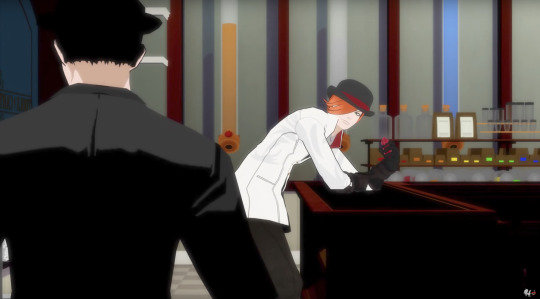
This is a technique nearly two decades old. Everyone knows the story of how Buffy got started. Whedon wanted a stereotypical heroine--small, cute, blonde--but who, rather than getting killed by the monster in the alleyway, ends up being the very thing that the monster should fear. It's an oldie now, but a goodie. We're presented with this tiny, adorable girl who is characterized as a victim, only to find that she's the one with the most power. Not only can she kick a full-grown man across a room, she's got some crazy weaponry tucked away too.

This is, by definition, a badass moment.
As we see in the ensuing fight this little girl is very proficient with her scythe. There's a great moment as her headphones play "This Will Be the Day" diegetically, only for the song to move into non-diegetic soundtrack, and then back to diegetic music as she turns off her headphones and... they disappear? Presumably she has pockets.
Iffy animation aside, RWBY seems like the kind of world that would give its girls pockets.
Roman: "Okay... get her."
That little moment of confusion--Roman's disbelieving "Okay?"--seems a little like inconsistent world-building. Certainly he knows that Signal and Beacon aren't too far from here, meaning that there are lots of teenagers around, Huntsmen and Huntresses in training that are capable of kicking his henchmen's ass. Is he just thrown off guard by this girl's (even younger) age? Who can say.
Regardless, she handles all the goons with ease. Ruby (yeah, let's just use all names for simplicity's sake) has a direct and efficient fighting style. This is our first glimpse into the maturity hiding behind a seemingly immature outer shell. Ruby doesn't take the time to taunt the goons or get all flashy with her fighting, she just takes them out, pure and simple, something that young and confident heroes often struggle with. Roman proves a little harder though when his cane turns out to be a gun.
Lesson One: pretty much everything in RWBY is a gun. Cane? Gun. Scythe? Gun. Thermos? Gun! That lamp? Probably also a gun.
As Roman escapes we get another glimpse of Ruby's priorities when she asks the storekeeper, "Are you okay if I go after him?" It's a small but wonderful moment that tells us Ruby isn't a hero who wants to fight for the sake of fighting, at least outside of friendly competitions. Had the storekeeper been injured or needed her for some other reason, Ruby would have held his needs above just catching the bad guys. That's important.
So, having gotten the a-okay, Ruby chases Roman up to the rooftops and we hear his annoyed (yet impressed?) mutter of, "Persistent." Just as they're about to duke it out again an airship arrives that Roman boards, throwing out a dust crystal that explodes when he shoots it. It looks like Ruby might have been caught in the blast, but at the last possible second Glynda Mother-F***ing Goodwitch arrives to save the day.

Why was she out in town this late at night? How did she feel seeing some tiny child fighting a notoriously wanted criminal up on the rooftop? These are questions only fanfic can answer. The point is that Glynda saves Ruby not once, but twice, all while exhibiting a truly impressive amount of power. It's here that we first get to see not just fantasy weapons, but what we might term magic (in what will quickly become a fairly convoluted magical system). It isn’t until later that we realize others don’t consider Glynda’s abilities to be magic, though given what we now know about semblances and their assumed connection to Humanity 1.0, it’s perhaps no coincidence that the audience is meant to think this is magic at first glance. But telekinesis--the ability to manipulate anything from objects to the weather itself--is staggering nonetheless and the show should really give Glynda something else to do with her power besides fixing craters and broken buildings. Or just bring her back, period.
Glynda even makes a little "Humph" sound when she blocks the blast like, "Please. You'll have to try harder than that."
They do.
Roman yells to the pilot that they have a "Huntress" to deal with and we're given glimpses of a more important villain: fancy dress, high heels, strange tattoo on her back, and an affinity for fire. She's deemed important simply by the fact that the 'camera' always keeps her face hidden from view, inviting speculation as to who she is and what her motives are. Though she and Glynda seem pretty evenly matched (with Ruby joining in to help), Roman flies them out of there before things get more heated. Pun intended.
As a side note, it’s worth pointing out that, in retrospect, we did just see magic with Cinder... which we then assume for a very long stretch was her semblance given what we quickly learn about Glynda. You can see why this stuff gets muddled. The fact that Ruby, a bright and fighting obsessed girl, doesn’t seem to think it odd that someone can shoot fire just hammers home how not magic-y these abilities read to characters in world. Until the plot suddenly wants them to. AKA bird anger.
Regardless, as the viewer cheers at the rarity of three women dominating a fight scene, Ruby has bigger things to think about. Like the fact that Glynda is a Huntress and Ruby just has to have an autograph.
Cut from this:
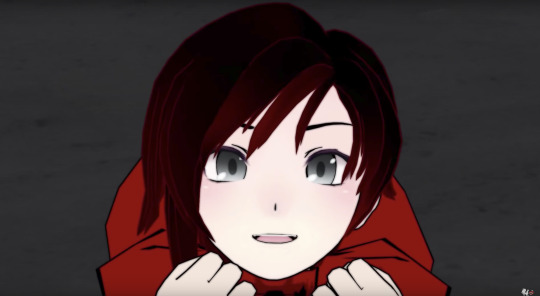
To this:

Humor aside, this actually does a lot for situating what a Huntress is in the viewer's mind. We might not have an exact definition yet, but we know two important things: they're on the side of our small hero (Glynda protects Ruby) and they're regarded as at least minor celebrities. In short, they're the Big Good to the mysterious Big Bad.
They’re also, as we’re about to see, subject to the law.
But back to Ruby. See that spotlight? Glynda has this 15yo girl in an interrogation room, prowling about while lecturing that she "put herself and others in grave danger." Interesting. What others were in danger? Civilians? Looks like everyone else cleared the streets once Roman showed up. The shopkeeper? As said, Ruby was very careful about making sure he was okay. Normally I’d be 100% on Glynda’s side here, but I think Ruby actually acted very maturely given the circumstances. Especially considering that she’s right: they started it. Glynda’s generic reprimands might imply that there are many non-Huntsmen trained fighters out there making a mess of things (at least by Glynda's standards). Certainly we later see conflict between trained Huntsmen/Huntresses and those who learned to fight "outside the kingdom."
Also... just reminding everyone... that Glynda uses a riding crop. Rooster Teeth had to know the can of worms they were opening with that little choice. If you don't want porn of the deputy headmistress and various other characters, don't dress her like a dominatrix and give her lines like, "I'd have sent you home with a pat on the back... and a slap on the wrist!"
Glynda is very serious that Ruby would be in big trouble if it weren't for the fact that a certain someone wants to meet her. Enter my trash fave:
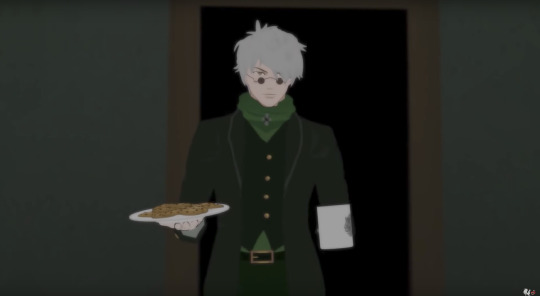
Ozpin.
He's basically Dumbledore if he actually had better justifications for his iffy decisions and looked like a hot 30yo. My priorities aside, more fascinating questions start cropping up. How long has Ruby been held in this room? What was that conversation between Glynda and Ozpin like--Hey, I found this random child who nearly took out a whole criminal gang, that seems like your kind of thing? Why does Ozpin arrive with a full plate of chocolate chip cookies? Did he bake them himself? Does Ruby ever get Glynda’s autography?
These kinds of questions are the lifeblood of fandom.
As an aside, I'm a complete animation snob. I've been spoiled by too many great artists to immediately accept just anything you throw up on screen. When I first watched this episode and saw Crunchy Roll's review that RWBY is "lovely to look at" my response was, "...seriously?" This moment, when Ozpin gives Ruby the cookies and they proceed to just disappear as they approach her mouth was my breaking point for a while. I had to be talked into watching more... and I'm so glad I was. Now, after years with these characters, I have a much deeper appreciation for the art style and the beauty that RWBY contains. Now the cookie scene is just straight up funny to me.
Back to plot though. Ozpin introduces himself by introducing Ruby. We get her name for the first time and as Ozpin peers down at her he says, "You have... silver eyes," which confuses Ruby and has the viewer nodding sagely. Yep. That'll come back later.
Ozpin reviews Ruby's fight and wants to know where she learned all that. More specifically, he wants to know who taught her to use "one of the most dangerous weapons ever designed," which is another fascinating moment that I think is largely overlooked by the fandom. Ruby is living in a world chock-full of crazy dangerous weaponry. Already we've seen a gun-cane and a riding crop used as a wand. The fact that Ozpin labels Ruby's sniper-scythe as one of the most dangerous not only re-emphasizes her skill, but hints that the scythe may be a particularly powerful weapon... one even he might favor. Though we later get to see Ozpin fight with his cane and he clearly prefers that form, we've yet to get a full explanation for those gears in it:

In retrospect after Volume 6, there’s little evidence that his cane turns into a full other weapon, but it was an cool theory for a while.
Ruby says proudly that her Uncle Qrow taught her everything and that she's currently a student at Signal Academy.
Ozpin: "And what's an adorable girl like you doing at a school designed to train warriors?"
Ruby: "Well... I want to be a Huntress."
Ozpin: "You want to slay monsters?"
Ruby: "Yeah."
Ruby launches into an excited speech about following in her big sister's footsteps, looking for a career that's more "romantic" than the police, and above all getting to help people. Watching Ozpin in this scene gives us a pretty clear view into his thoughts: his shock at Ruby's proficiency with the scythe, making sure he's reading the situation correctly (this small, adorable child wants to fight evil?), his look of approval as Ruby tries to explain her thinking. There's even what I read as a little test. "You want to slay monsters?" A major theme in RWBY is that people are the real monster, the biggest threat, and it takes Ruby a long time to learn that. To semi-quote Sirius, the world isn't split into good people and Grimm. Though Ruby doesn't realize this yet--she just implies that she wants to fight Grimm--her skill and pure intentions (which will come into play later during "Mountain Glenn") are enough for Ozpin to offer her a place at Beacon two years early. As we learn later, as an added bonus this also helps keep her safe. Those with silver eyes are hunted and Ruby has not been keeping a low profile.
"You want to come to my school? Well... okay."
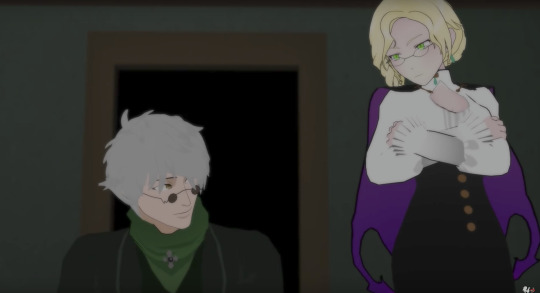
One of these teachers is happier about this situation than the other.
It’s pretty amazing though.
Yang thinks it's amazing too. We jump ahead an unspecified amount of time to meet Ruby's half-sister on the airship to Beacon. I adore their interaction here because so often media limits sibling relationships to arguing and competition. Not so with these two. Yang isn't at all jealous that her little sister is getting special treatment. Ruby is the only one with issues:
Ruby: "I got moved ahead two years... I just don't want people to think I'm special or anything."
Yang: "But you are special."
Ruby just wants to be a normal girl with normal knees. No bee's knees allowed.
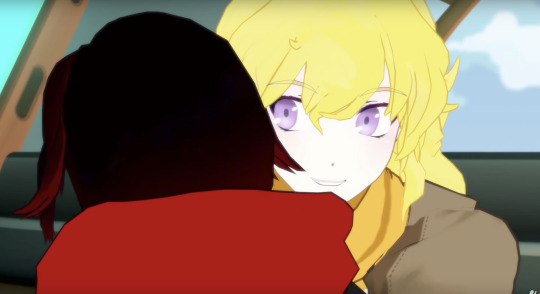
As Ruby begins struggling with her new situation we get Roman's name in a news bulletin, along with a hilariously different art style.

We also get reference to people called "Faunus" who possess animal traits, their civil rights movement, and the violent organization called the White Fang that recently interfered in a peaceful protest. The bulletin is cut off by a holographic Glynda's welcome.
Yang: "Who's that?"
Glynda's hologram introduces herself immediately after, but I find it funny that Ruby doesn't even look like she's going to try and answer. As if she hadn't met and fought alongside Glynda just a little while ago. Also. Ruby knew exactly who Ozpin was. Didn't have a clue about Glynda. Poor Professor Goodwitch does all the work around Beacon and receives none of the credit lol.
I actually really like Glynda's speech here though. She's welcoming to the students without coddling them. Like other shows with children entering combat, RWBY lets the viewer know that we can't always apply our real-world morality to these situations. These kids might be young--17 years old and 15 in Ruby's case--but they're going to be treated like adults for as long as that’s logical. As we’ll see later though, there’s a distinct difference between responsibility inside school and out...
Right before our pilot ends we're introduced to Jaune, or the name we know him by so far, "Vomit Boy." The webisode ends on a light note with Jaune getting puke on Yang's shoes and the two sisters freaking out about it. We're also given our first, gorgeous look at Beacon:
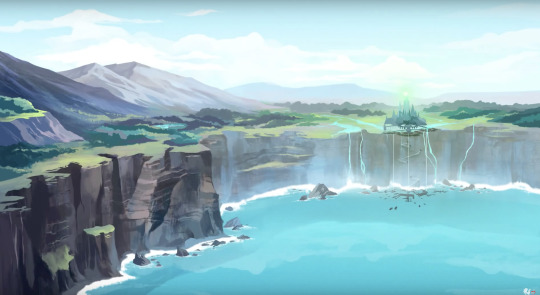
Now that’s animation I can get behind. Everything is light and happy. Ah, they have no idea the horror that's coming for them. Just wait until Volume 3.
Until then, 💚
13 notes
·
View notes
Text
Your Ultimate Women-Write-The-Best-of-Everything 2019 Reading List
The Voyeurs (Graphic Novel)
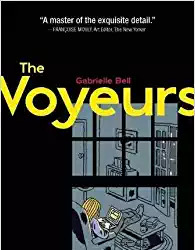
"The Voyeurs is the work of a mature writer, if not one of the most sincere voices of her literary generation. It's a fun, honest read that spans continents, relationships and life decisions. I loved it."—Chris Ware, Acme Novelty Library
"As she watches other people living life, and watches herself watching them, Bell's pen becomes a kind of laser, first illuminating the surface distractions of the world, then scorching them away to reveal a deeper reality that is almost too painful and too beautiful to bear."— Alison Bechdel, Fun Home
"A master of the exquisite detail, Bell provides a welcome peephole into our lives."—Françoise Mouly, The New Yorker
The Voyeurs, was named one of the best books of the year by Publishers Weekly, Kirkus Reviews, and the Atlantic.
Behind the Beautiful Forevers: Life, Death, and Hope in a Mumbai Undercity

In this brilliant, breathtaking book by Pulitzer Prize winner Katherine Boo, a bewildering age of global change and inequality is made human through the dramatic story of families striving toward a better life in Annawadi, a makeshift settlement in the shadow of luxury hotels near the Mumbai airport. As India starts to prosper, the residents of Annawadi are electric with hope. Abdul, an enterprising teenager, sees “a fortune beyond counting” in the recyclable garbage that richer people throw away. Meanwhile Asha, a woman of formidable ambition, has identified a shadier route to the middle class. With a little luck, her beautiful daughter, Annawadi’s “most-everything girl,” might become its first female college graduate.
Marbles: Mania, Depression, Michelangelo, and Me: A Graphic Memoir
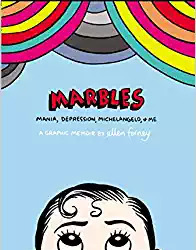
Cartoonist Ellen Forney explores the relationship between “crazy��� and “creative” in this graphic memoir of her bipolar disorder, woven with stories of famous bipolar artists and writers.
Shortly before her thirtieth birthday, Forney was diagnosed with bipolar disorder. Flagrantly manic and terrified that medications would cause her to lose creativity, she began a years-long struggle to find mental stability while retaining her passions and creativity.
Searching to make sense of the popular concept of the crazy artist, she finds inspiration from the lives and work of other artists and writers who suffered from mood disorders, including Vincent van Gogh, Georgia O’Keeffe, William Styron, and Sylvia Plath. She also researches the clinical aspects of bipolar disorder, including the strengths and limitations of various treatments and medications, and what studies tell us about the conundrum of attempting to “cure” an otherwise brilliant mind.
Darkly funny and intensely personal, Forney’s memoir provides a visceral glimpse into the effects of a mood disorder on an artist’s work, as she shares her own story through bold black-and-white images and evocative prose.
The Woman in Cabin 10
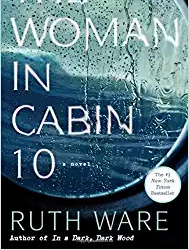
From New York Times bestselling author of the “twisty-mystery” (Vulture) novel In a Dark, Dark Wood, comes The Woman in Cabin 10, an equally suspenseful and haunting novel from Ruth Ware—this time, set at sea. In this tightly wound, enthralling story reminiscent of Agatha Christie’s works, Lo Blacklock, a journalist who writes for a travel magazine, has just been given the assignment of a lifetime: a week on a luxury cruise with only a handful of cabins. The sky is clear, the waters calm, and the veneered, select guests jovial as the exclusive cruise ship, the Aurora, begins her voyage in the picturesque North Sea. At first, Lo’s stay is nothing but pleasant: the cabins are plush, the dinner parties are sparkling, and the guests are elegant. But as the week wears on, frigid winds whip the deck, gray skies fall, and Lo witnesses what she can only describe as a dark and terrifying nightmare: a woman being thrown overboard. The problem? All passengers remain accounted for—and so, the ship sails on as if nothing has happened, despite Lo’s desperate attempts to convey that something (or someone) has gone terribly, terribly wrong…
1222
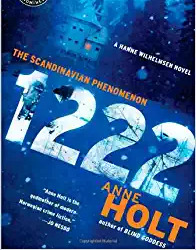
Nominated for the Edgar Award for Best Novel, from Norway’s #1 bestselling female crime writer—a “beguiling” (The Washington Post) “good old-fashioned murder mystery” (The New York Times Book Review) set in an isolated hotel where guests stranded during a monumental snowstorm begin turning up dead. A train on its way to the northern reaches of Norway derails during a massive blizzard, 1,222 meters above sea level. The passengers head for a nearby hotel, centuries old and practically empty. With plenty of food and shelter from the storm, the evacuees think they are safe, until one of them turns up dead. With no sign of rescue and the storm raging, retired police inspector Hanne Wilhelmsen is asked to investigate. Paralyzed by a bullet lodged in her spine, Hanne has no desire to get involved. But when another body turns up, panic takes over. Complicating things is the presence of a mysterious guest, a passenger who traveled in a private rail car and now stays secluded on the top floor of the hotel. No one knows who the guest is, or why armed guards are needed. Hanne has her suspicions. Trapped in her wheelchair, trapped by the storm, and now trapped with a killer, Hanne knows she must act before the killer strikes again.
Robot Dreams
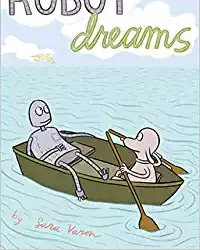
A Kirkus Reviews Best Book of the Year A PW Best Book of the Year An ALSC Notable Children’s Book A YALSA Great Graphic Novel
This moving, charming graphic novel about a dog and a robot shows us in poignant detail how powerful and fragile relationships are.
Borderlands / La Frontera: The New Mestiza

Rooted in Gloria Anzaldúa's experience as a Chicana, a lesbian, an activist, and a writer, the essays and poems in this volume profoundly challenged, and continue to challenge, how we think about identity. Borderlands / La Frontera remaps our understanding of what a "border" is, presenting it not as a simple divide between here and there, us and them, but as a psychic, social, and cultural terrain that we inhabit, and that inhabits all of us.
Hyperbole and a Half: Unfortunate Situations, Flawed Coping Mechanisms, Mayhem, and Other Things That Happened
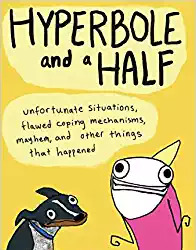
Every time Allie Brosh posts something new on her hugely popular blog Hyperbole and a Half the internet rejoices. This full-color, beautifully illustrated edition features more than fifty percent new content, with ten never-before-seen essays and one wholly revised and expanded piece as well as classics from the website like, “The God of Cake,” “Dogs Don’t Understand Basic Concepts Like Moving,” and her astonishing, “Adventures in Depression,” and “Depression Part Two,” which have been hailed as some of the most insightful meditations on the disease ever written.
Salt, Fat, Acid, Heat: Mastering the Elements of Good Cooking

Now a Netflix series! New York Times Bestseller and Winner of the 2018 James Beard Award for Best General Cookbook and multiple ICAP Cookbook Awards Named one of the Best Books of 2017 by: NPR, BuzzFeed, The Atlantic, The Washington Post, Chicago Tribune, Rachel Ray Every Day, San Francisco Chronicle, Vice Munchies, Elle.com, Glamour, Eater, Newsday, Minneapolis Star Tribune, The Seattle Times, Tampa Bay Times, Tasting Table, Modern Farmer, Publishers Weekly, and more. A visionary new master class in cooking that distills decades of professional experience into just four simple elements, from the woman declared “America’s next great cooking teacher” by Alice Waters.
Monstress Volume 1: Awakening
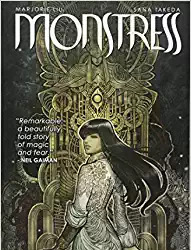
Set in an alternate matriarchal 1900's Asia, in a richly imagined world of art deco-inflected steam punk, MONSTRESS tells the story of a teenage girl who is struggling to survive the trauma of war, and who shares a mysterious psychic link with a monster of tremendous power, a connection that will transform them both and make them the target of both human and otherworldly powers. About the Creators: New York Times bestselling and award-winning writer Marjorie Liu is best known for her fiction and comic books. She teaches comic book writing at MIT, and leads a class on Popular Fiction at the Voices of Our Nation (VONA) workshop.
Persepolis
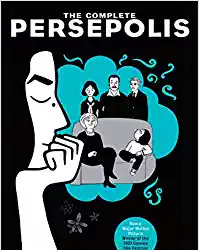
Marjane Satrapi's best-selling, internationally acclaimed graphic memoir. Persepolis is the story of Satrapi's unforgettable childhood and coming of age within a large and loving family in Tehran during the Islamic Revolution; of the contradictions between private life and public life in a country plagued by political upheaval.
Nobody Nowhere: The Remarkable Autobiography of an Autistic Girl
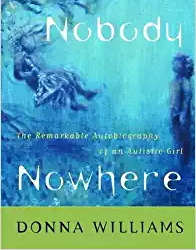
Donna Williams was a child with more labels than a jam-jar: deaf, wild disturbed, stupid insane... She lived within herself, her own world her foreground, ours a background she only visited. Isolated from her self and from the outside world, Donna was, in her words, a Nobody Nowhere. She swung violently between these two worlds, battling to join our world and, simultaneously, to keep it out. Abandoned from all connection to the self within her, she lived as a ghost with a body, a patchwork of the images which bombarded her. Intact but detached from the seemingly incomprehensible world around her, she lived in what she called 'a world under glass`.
After twenty-five years of being misunderstood, and unable to understand herself, Donna stumbled upon the word 'autism': a label, but one which held up a mirror and made sense of her life and struggles, and gave her a chance to finally forgive both herself and those around her.
The Ice Princess
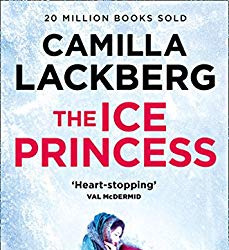
The psychological thriller debut of No.1 bestselling Swedish crime sensation Camilla Lackberg.
A small town can hide many secrets
Returning to her hometown after the funeral of her parents, writer Erica Falck finds a community on the brink of tragedy. The death of her childhood friend, Alex, is just the beginning. Her wrists slashed, her body frozen in an ice-cold bath, it seems like she’s taken her own life.
Meanwhile, local detective Patrik Hedström is following his own suspicions about the case. It’s only when they start working together that the truth begins to emerge about a small town with a deeply disturbing past…
The Vampire Chronicles: Interview with a Vampire, The Vampire Lestat, and The Queen of the Damned
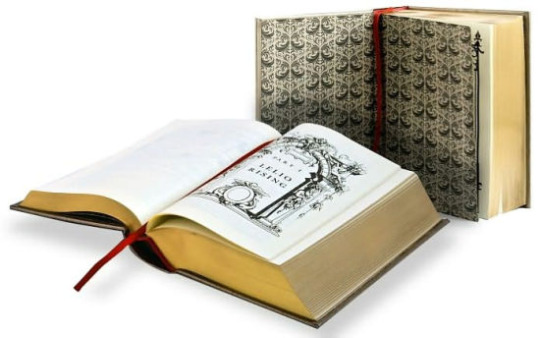
In 1976, nearly 80 years after Bram Stoker published Dracula, Anne Rice's bestselling first novel, Interview with the Vampire, breathed new life into the vampire myth. Now, in one chilling volume, here are the first three classic novels of The Vampire Chronicles; Interview with the Vampire, The Vampire Lestat, and Queen of the Damned.
Adulthood is a Myth: A Sarah's Scribbles Collection
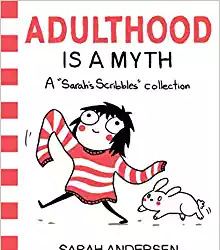
Do you love networking to advance your career? Is adulthood an exciting new challenge for which you feel fully prepared? Ugh. Please go away. 2016 GOODREADS CHOICE AWARD WINNER FOR GRAPHIC NOVELS AND COMICS! These casually drawn, perfectly on-point comics by the hugely popular young Brooklyn-based artist Sarah Andersen are for the rest of us. They document the wasting of entire beautiful weekends on the internet, the unbearable agony of holding hands on the street with a gorgeous guy, and dreaming all day of getting home and back into pajamas. In other words, the horrors and awkwardnesses of young modern life. Oh and they are totally not autobiographical. At all.
Nimona
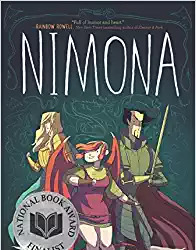
Indies Choice Book of the Year * National Book Award Finalist * New York Times Bestseller * New York Times Notable Book * Kirkus Best Book * School Library Journal Best Book * Publishers Weekly Best Book * NPR Best Book * New York Public Library Best Book * Chicago Public Library Best Book
The New York Times bestselling graphic novel sensation from Noelle Stevenson, based on her beloved and critically acclaimed web comic. Kirkus says, “If you’re going to read one graphic novel this year, make it this one.”
Nemeses! Dragons! Science! Symbolism! All these and more await in this brilliantly subversive, sharply irreverent epic from Noelle Stevenson. Featuring an exclusive epilogue not seen in the web comic, along with bonus conceptual sketches and revised pages throughout, this gorgeous full-color graphic novel has been hailed by critics and fans alike as the arrival of a “superstar” talent (NPR.org).
Cultural Anthropology Barbara Miller

Cultural Anthropology presents a balanced introduction to the world’s cultures, focusing on how they interact and change. Author Barbara Miller provides many points where readers can interact with the material, and encourages students to think critically about other cultures as well as their own. Featuring the latest research and statistics throughout, the eighth edition has been updated with contemporary examples of anthropology in action, addressing recent newsworthy events such as the Ebola epidemic.
Captain Marvel Volume 1: Higher, Further, Faster, More
Kelly Sue Deconnick
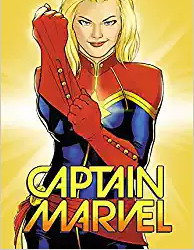
Hero! Pilot! Avenger! Captain Marvel, Earth's Mightiest Hero with an attitude to match, is back and launching headfirst into an all-new ongoing adventure! As Captain Marvel, a.k.a. Carol Danvers, comes to a crossroads with a new life and new romance, she makes a dramatic decision that will alter the course of her life - and the entire Marvel Universe - in the months to come. But as Carol takes on a mission to return an alien girl to her homeworld, she lands in the middle of an uprising against the Galactic Alliance! Investigating the forced resettlement of Rocket Girl's people, Carol discovers that she has a history with the man behind the plot. But when the bad guy tries to blackmail Carol and turn the Avengers against her, it's payback time! Guest-starring the Guardians of the Galaxy!
7 notes
·
View notes
Text
Emerald Tablet
The Emerald Tablet, also known as the Smaragdine Table, or Tabula Smaragdina, is a compact and cryptic piece of the Hermetica reputed to contain the secret of the prima materia and its transmutation. It was highly regarded by European alchemists as the foundation of their art and its Hermetic tradition. The original source of the Emerald Tablet is unknown. Although Hermes Trismegistus is the author named in the text, its first known appearance is in a book written in Arabic between the sixth and eighth centuries. The text was first translated into Latin in the twelfth century. Numerous translations, interpretations and commentaries followed.
The layers of meaning in the Emerald Tablet have been associated with the creation of the philosopher's stone, laboratory experimentation, phase transition, the alchemical magnum opus, the ancient, classical, element system, and the correspondence between macrocosm and microcosm.
Textual history
The text of the Smaragdine Tablet gives its author as Hermes Trismegistus ("Hermes the Thrice-Greatest"), a legendary Hellenistic[1] combination of the Greek god Hermes and the ancient Egyptian god Thoth.[2] Despite the claims of antiquity, it's believed to be an Arabic work written between the sixth and eighth centuries.[3] The oldest documentable source of the text is the Kitāb sirr al-ḫalīqa (Book of the Secret of Creation and the Art of Nature), itself a composite of earlier works. This volume is attributed to "Balinas" (or Pseudo-Apollonius of Tyana) who wrote sometime around the eighth century.[4] In his book, Balinas frames the Emerald Tablet as ancient Hermetic wisdom. He tells his readers that he discovered the text in a vault below a statue of Hermes in Tyana, and that, inside the vault, an old corpse on a golden throne held the emerald tablet.[5]
Following Balinas, an early version of the Emerald Tablet appeared in Kitab Ustuqus al-Uss al-Thani (Second Book of the Elements of Foundation) attributed to Jabir ibn Hayyan.[6] The Smaragdine Tablet was first translated into Latin in the twelfth century by Hugo of Santalla.[7] The text is also in an enlarged thirteenth century edition of Secretum Secretorum (also known as Kitab Sirr al-Asrar).
The tablet text
A translation by Isaac Newton is found among his alchemical papers that are currently housed in King's College Library, Cambridge University.[8]
Tis true without error, certain & most true.
That which is below is like that which is above & that which is above is like that which is below to do the miracles of one only thing
And as all things have been & arose from one by the [meditation] of one: so all things have their birth from this one thing by adaptation.
The Sun is its father, the moon its mother, the wind hath carried it in its belly, the earth is its nurse.
The father of all perfection in the whole world is here.
Its force or power is entire if it be converted into earth.
Separate thou the earth from the fire, the subtle from the gross sweetly with great industry.
It ascends from the earth to the heaven & again it descends to the earth & receives the force of things superior & inferior.
By this means you shall have the glory of the whole world
& thereby all obscurity shall fly from you.
Its force is above all force. For it vanquishes every subtle thing & penetrates every solid thing.
So was the world created.
From this are & do come admirable adaptations whereof the means (or process) is here in this. Hence I am called Hermes Trismegist, having the three parts of the philosophy of the whole world
That which I have said of the operation of the Sun is accomplished & ended.
Theatrum Chemicum
Another translation can be found in Theatrum Chemicum, Volume IV (1613), in Georg Beatus' Aureliae Occultae Philosophorum:[9][10]
This is true and remote from all cover of falsehood
Whatever is below is similar to that which is above. Through this the marvels of the work of one thing are procured and perfected.
Also, as all things are made from one, by the [consideration] of one, so all things were made from this one, by conjunction.
The father of it is the sun, the mother the moon. The wind bore it in the womb. Its nurse is the earth, the mother of all perfection.
Its power is perfected. If it is turned into earth.
Separate the earth from the fire, the subtle and thin from the crude and [coarse], prudently, with modesty and wisdom.
This ascends from the earth into the sky and again descends from the sky to the earth, and receives the power and efficacy of things above and of things below.
By this means you will acquire the glory of the whole world,
And so you will drive away all shadows and blindness.
For this by its fortitude snatches the palm from all other fortitude and power. For it is able to penetrate and subdue everything subtle and everything crude and hard.
By this means the world was founded
And hence the marvelous conjunctions of it and admirable effects, since this is the way by which these marvels may be brought about.
And because of this they have called me Hermes Tristmegistus since I have the three parts of the wisdom and philosophy of the whole universe.
My speech is finished which I have spoken concerning the solar work
Original edition of the Latin text. (Chrysogonus Polydorus, Nuremberg 1541):
Verum, sine mendacio, certum et verissimum:
Quod est inferius est sicut quod est superius, et quod est superius est sicut quod est inferius, ad perpetranda miracula rei unius.
Et sicut res omnes fuerunt ab uno, meditatione unius, sic omnes res natae ab hac una re, adaptatione.
Pater eius est Sol. Mater eius est Luna, portavit illud Ventus in ventre suo, nutrix eius terra est.
Pater omnis telesmi[12] totius mundi est hic.
Virtus eius integra est si versa fuerit in terram.
Separabis terram ab igne, subtile ab spisso, suaviter, magno cum ingenio.
Ascendit a terra in coelum, iterumque descendit in terram, et recipit vim superiorum et inferiorum.
Sic habebis Gloriam totius mundi.
Ideo fugiet a te omnis obscuritas.
Haec est totius fortitudinis fortitudo fortis, quia vincet omnem rem subtilem, omnemque solidam penetrabit.
Sic mundus creatus est.
Hinc erunt adaptationes mirabiles, quarum modus est hic. Itaque vocatus sum Hermes Trismegistus, habens tres partes philosophiae totius mundi.
Completum est quod dixi de operatione Solis.
Influence
In its several Western recensions, the Tablet became a mainstay of medieval and Renaissance alchemy. Commentaries and/or translations were published by, among others, Trithemius, Roger Bacon, Michael Maier, Aleister Crowley, Albertus Magnus, and Isaac Newton. The concise text was a popular summary of alchemical principles, wherein the secrets of the philosopher's stone were thought to have been described.[13]
The fourteenth century alchemist Ortolanus (or Hortulanus) wrote a substantial exegesis on The Secret of Hermes, which was influential on the subsequent development of alchemy. Many manuscripts of this copy of the Emerald Tablet and the commentary of Ortolanus survive, dating at least as far back as the fifteenth century. Ortolanus, like Albertus Magnus before him saw the tablet as a cryptic recipe that described laboratory processes using deck names (or code words). This was the dominant view held by Europeans until the fifteenth century.[14]
By the early sixteenth century, the writings of Johannes Trithemius (1462–1516) marked a shift away from a laboratory interpretation of the Emerald Tablet, to a literal approach. Trithemius equated Hermes' one thing with the monad of pythagorean philosophy and the anima mundi. This interpretation of the Hermetic text was adopted by alchemists such as John Dee, Heinrich Cornelius Agrippa and Gerhard Dorn.[15]
C.G. Jung identified The Emerald Tablet with a table made of green stone which he encountered in the first of a set of his dreams and visions beginning at the end of 1912, and climaxing in his writing Seven Sermons to the Dead in 1916.[citation needed] Historians of science, Eric John Holmyard (1891-1959) and Julius Ruska (1867-1949) also studied the tablet in the twentieth century. Because of its longstanding popularity, the Emerald Tablet is the only piece of non-Greek Hermetica to attract widespread attention in the West.
1 note
·
View note
Text
As Above Deck: Book of Shadows Tarot, Volume 1 (Cards W/ Instructions)
https://liber-al.com/?p=43109&utm_source=SocialAutoPoster&utm_medium=Social&utm_campaign=Tumblr As Above , volume one within The Book of Shadows Tarot Kit , is now available as a standalone deck. This powerful tarot is lovingly crafted upon Wiccan beliefs and practices. On this magical journey, encounter beautiful gods and godesses, joyous Sabbat celebrations, spell-weaving rites, and vivid scenes central to Pagan spirituality. From the suits-represented by air, fire, water, and earth-to the major arcana, the tarot’s overall structure is built upon Wiccan themes. The second volume, So Below , is also available. The companion booklets for most Lo Scarabeo decks are in five languages: English, Spanish, French, Italian, and German. Editorial Reviews Summary: The Book of Shadows Tarot is the first deck in a two deck set. Each deck is designed to work on its own as well as in tandem with its partner deck. This volume, As Above , is a unique deck using the structure of tarot to explore the beliefs of the pagan worldview. It is both a teaching deck as well as a powerful and insightful divinatory tool. Here is a video created by Lo Scarabeo that takes a peek into the creation of this fascinating new deck. Actual Review: Because this is a rather special deck and because I created it, this review will be a little different, a little more personal. In 2008 I spent some time in Italy with the good folks at Lo Scarabeo. They asked me to create a deck, or rather a pair of decks. The set was to be called The Book of Shadows Tarot and was to be comprised of two separate decks. Beyond that, they had no requirements. I was free to do whatever I wished within that framework. A key spiritual belief of mine is: As Above, So Below, so I decided to use that as my organizing theme. The first deck, As Above , is a non-RWS deck that represents the theory and teachings of Wicca. The second deck, So Below , is a RWS-based deck that shows how the magic of Wicca (for I believe that all of Wicca is Magic…although not necessarily the same as Witchcraft) is experienced by Wiccans in every day life. Creating the first deck was a huge challenge. I worked within the structure of the Major Arcana and four suits with fourteen cards each. I kept the archetypal core meanings of the Majors fairly closely to RWS. The Minor Arcana, however, are not at all related to the RWS. For all of those who say all I make are RWS clones, well, here is my best effort at something completely uniquely mine. As Above is a tarot deck designed to hold and express modern Pagan spiritual teachings. Pagan beliefs are broad and hardly unified, but we will discuss that momentarily. The Major Arcana cards represent some of the basic tenets while the Minor Arcana thoroughly explores elemental energies while providing foundations for further studies in the areas of astrology, the faces of the Goddess, the magic of the physical realm, and various forms of divination. Because each card is a portal into vast realms of knowledge and experience and because space in this book is limited, each section includes a reading list of excellent texts for further studies. Here, I’ll introduce you to some of the things I like best about the deck. The first is Key V. In traditional tarot, it is called The Hierophant, and in some Pagan decks, The High Priest. I call it The Book of Shadows, a book where Pagans write down their tradition, which is an ever-evolving experience, always growing, always changing, always dynamic. Early on in the tarot’s history, the Major Arcana cards were not numbered. However, we are now quite accustomed to putting numbers on these cards. This provides a number of benefits. For example, many readers like to incorporate numerology into their readings. Others consider the numerical sequence as a variation on the Hero’s Journey (a concept popularized by Joseph Campbell and, in tarot circles, is called the Fool’s Journey, a phrase first used by Eden Gray). As for me, I think one of the most practical aspects is so that beginners can easily find the card they are looking up as they first learn tarot. Mundane, perhaps, but from a beginner’s standpoint, it is very much appreciated. Following this useful tradition, the Major Arcana cards in this deck are indeed numbered. However, the Major Arcana cards are in groups that do not relate to the numbers printed on them. Instead, they are divided into different classifications that illustrate various aspects of Pagan beliefs. The Major Arcana cards in this deck follow the archetypal ideas expressed in traditional tarot decks but express them from a pagan point of view. In this way, the deck becomes an educational tool that a beginner can use to form a foundation for further studies. It is also an excellent reading deck that will resonate with the pagan soul. The first five cards represent very basic core beliefs. These are the essential aspects upon which all else is built. These include The God, the Goddess, the World, the Elements, and the Summerlands. The second section includes the Wheel of the Year and eight Sabbats that make up the pagan calendar. The third group consists of the tools and experiences of the practicing pagan, such as initiation, Book of Shadows, and spellcasting. In fact, here are all the Majors in their groupings listed by their traditional names and their BOS names in parentheses: 1. A Pagan Framework XXI, The World (The World) III, The Empress & IV, The Emperor (The Goddess & the God) I, The Magician (The Elements) O, The Fool (The Summerlands) 2. The Circle of Life X, The Wheel (The Wheel of the Year) XVIII, The Moon (Samhain) XIII, Death (Yule) XVII, The Star (Imbolc) XIV, Temperance (Ostara) VI, The Lovers (Beltane) XIX, The Sun (Litha) XV, The Devil (Lammas) XI, Justice (Mabon) 3. The Pagan Experience IX, The Hermit (The Path) VIII, Strength (Spellcasting) V, Hierophant (Book of Shadows) VII, Chariot (Transformation) VXI, The Tower (Warnings) XII, The Hanged Man (The Circle) XX, Judgement (Initiation) II, High Priestess (Wisdom) The Court Cards for the As Above , the first deck in the Book of Shadows Tarot , does not have traditional court cards. Instead, we have the Elemental, Maiden, Mother, and Crone. The Elementals are pretty self-explanatory, and represent the Elementals of Air, Water, Earth, and Fire. The Maiden, Mother, and Crone cards represent the waxing, full, and waning aspects of each element. And so, you see, they are not like the Knight, Queen, and King. Here are a few details of the Earth court by way of example. The Maiden of Earth takes her place among the new blossoms of the field. She brings a sense of lightness and gratitude, a joyful appreciation and celebration of everyday blessings. The Mother of Earth takes her place as Mother Nature, providing a rich harvest. She nourishes our bodies and our souls with the best of Her creation. The Crone of Earth lays the Earth to rest. Even the Earth must regenerate, and there is a time for everything in this life, including death. The numbered Minor cards represent different elemental aspects of the pagan universe. The suit of Fire focuses on the wisdom and energy of the heavens and as such depicts astrological wisdom. The suit of Water balances the mostly masculine energy of the planets with various faces of the Goddess. The suit of Air explores different methods of accessing Divine wisdom and guidance through various divinatory methods. The suit of Earth reveals magical sources found on our planet. Deck Attributes Name of deck: The Book of Shadows Tarot, Volume 1: As Above Reviewer’s Byline: Barbara Moore Publisher: Lo Scarabeo ISBN: 9780738735641 Creator(s) name(s): Barbara Moore Artist(s) name(s): Gregorz Krisinsky, Simone Gabrielli, Franco Rivolli, Peotro Scola di Mambro Name of accompanying book/booklet: The Book of Shadows Tarot Number of pages of book/booklet: 154 pages, all in English Author(s) of book/booklet: Barbara Moore Available in a boxed kit?: Yes Are there extras in the kit? What are they?: An empty space for The Book of Shadows Tarot, Volume 2: So Below Magical Uses: All magical purpose, including education Reading Uses: General Theme: Paganism Tarot, Divination Deck, or Other: Tarot Does it follow Rider-Waite-Smith Standard?: Yes Does it have extra cards?: No Does it have alternate names for Major Arcana cards?: Yes, see full review above Does it have alternate names for the Court Cards?: Yes, see full review above Why was deck created?: To explore the blending of Tarot with Paganism in a way that stretches Tarot and brings a unique perspective. – From the Publisher Click Here: https://liber-al.com/?p=43109&utm_source=SocialAutoPoster&utm_medium=Social&utm_campaign=Tumblr #Body,Mind&Spirit #Divination #General;Body,Mind&Spirit #LlewellynPublications #LoScarabeo #NewAge #Tarot;Non-Classifiable #Tarot&WisdomCards #Topical #Witchcraft
0 notes
Note
Hi! Eris, they/them, long time fan/first time querant. My question, such as it is: how do I break my deadlock/plateau/stagnation spiritually?
As background, I've been a practicing witch in some form for more than 10 years, but rarely with much intensity and focus. I've been trying to do more, involve myself in my work more, take steps I haven't taken before, tread new ground, and it just isn't happening. It's not a lack of trying, but everything feels so awkward and slow and it isn't getting more comfortable or easier with repetition.
If you have follow-up questions, let me know!
Good afternoon Eris, welcome to the ask box! For your reading, I have chosen both volumes of the Book of Shadows Tarot by Barbara Moore, because as much as I dislike this author, I have quite a few decks by her...for some reason. It's a very Wiccan duo of decks, as to be expected from Barbara Moore's works, but they felt appropriate to use here. Your card from the As Above deck is the Four of Earth reversed and your card from the So Below deck is the Knave of Wands reversed.
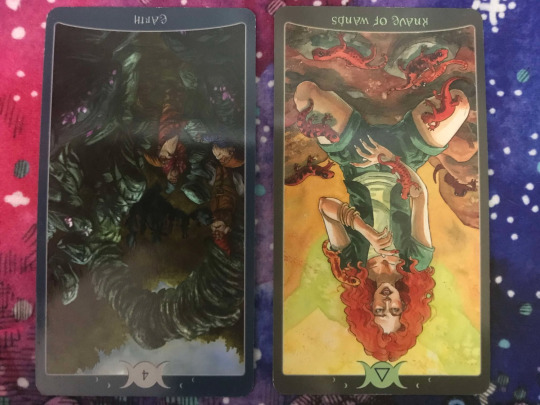
In the As Above deck, the suit of Earth (or Pentacles, as we're more familiar with) represents the actual, physical world we are standing on and things derived from it. This is the physical, material realm, and is often depicted with gnomes in this deck. The Four of Earth specifically is focused on stones and crystals. Its shadow side warns that resources, energy, or power are being squandered.
The So Below deck has the typical suits we expect from a tarot deck, with the Wands representing Fire and typically referring to work, creativity, passion, and the spiritual realm. Since these two decks are a pair, this suit is depicted with salamanders like the Fire suit from the As Above deck is. The Knave (or rather, Page) of Wands is the youngin of the Court, and when reversed, they are reckless and prone to taking risks.
Now, with a disclaimer that I don't know your practice and I'm just going off of what you've said in this ask, let's put these two together.
Together, these cards tell a story that points towards what I believe is the source of your problem. And simply put, that is overextending yourself. Rather than building on what you know and are good at, you may be flinging yourself into everything just to see what happens, which doesn't exactly help with training up your existing skills or even the ones you actually want to focus on. To that, I say that (for the most part) the knowledge isn't going anywhere. You can save it and store it for later to come back to. You don't have to reach particular levels in particular skills for everything.
But again, I don't know you or your practice, so this is just what I'm thinking from the cards I've gotten. I could be completely off the mark because I'm just working from the cards and your ask.
So with that said, if you feel so inclined, please feel free to send feedback in my ask box, leave feedback in a reblog of this reading, and/or reblog my reading guidelines!
~Jasper
#answered#blogger eris#tarot reading#deck: book of shadows volume 1: as above#deck: book of shadows volume 2: so below
3 notes
·
View notes
Note
Howdy it's me
Ezekiel he him
My question is how better should I connect with my spirit guides & familiars ( angles )
I want to honor myself and the entities in my life that help me in my practice and just want to know if there is a better way or just small things I can do to connect with them better for my practice
Thank you so much
Hey there Ezekiel, thanks for your patience! I used The Book of Shadows Tarot: As Above deck, which is volume one of two (naturally, the second is the So Below deck), for this question. It gave us the 8 of Fire reversed and the 7 of Air upright.
Yes, I typically only do one card draws, but this deck is very annoying to read with so I pulled two. It's a Lo Scarabeo deck, so it's mostly keywords in the guidebook.

So this is an overtly Wiccan deck, which sprinkles in Roman gods and their planets for a little spice. These Minor Arcana cards focus on the four elements, and each suit focuses on different things - Fire is about planetary magic and salamanders, Air is about divination and sylphs, Water is associated with random goddesses and traits and nixies (not undines, surprisingly), and Earth is associated with the natural world and gnomes.
Naturally, this is not my favorite deck, but it seemed like the one to use for this reading. So let's get into the cards.
The 8 of Fire depicts Neptune, both the planet and the god. The only thing we are told about this card in the guidebook is that, when reversed, it means "Delusion, deception, and secrecy; nightmares or self-destructive behavior." Likewise, we don't get much from the 7 of Air either. Just that it depicts the I-ching and that "the answer you seek is within the question you ask."
Gods, I remembered why I don't like reading this deck, the guidebook isn't helpful. That means that it's "Jasper pulling things out of their ass from a general understanding of tarot" time!
Fire and air are both typically referred to as "active" elements. These are elements that you use when you're trying to get shit going and done. And look, I'm gonna skip the entire red string board and give you the lowdown: The best way for you to interact with them is to talk to them. Whether with your own divination so you can improve on it, or if you're just talking and treating them as pals, you've gotta communicate (cough, Air) and pay attention to them (Fire). You may even want to learn new ways to do it, whether it's through a divination method you've never learned before or something else.
Good luck, Ezekiel! Hopefully this reading gives you some ideas. If you feel so inclined, please feel free to send feedback in my ask box and/or reblog my new reading guidelines!
~Jasper
3 notes
·
View notes